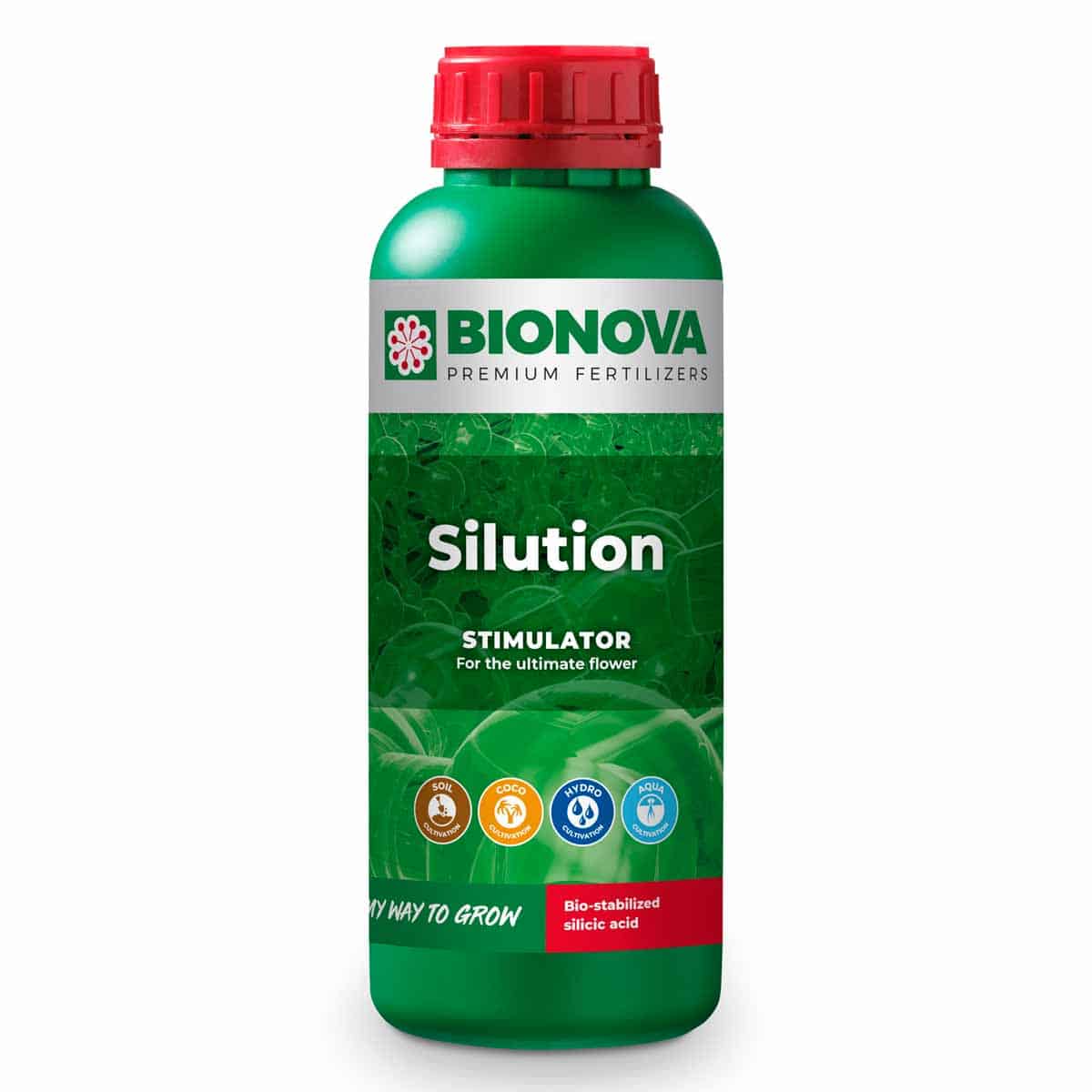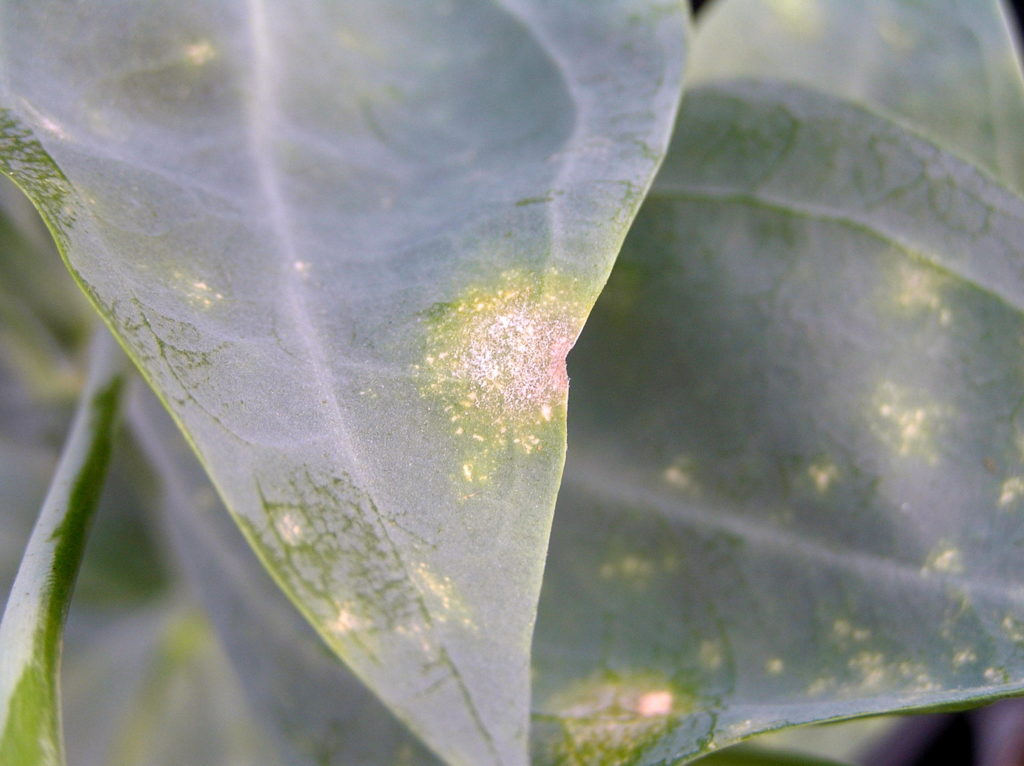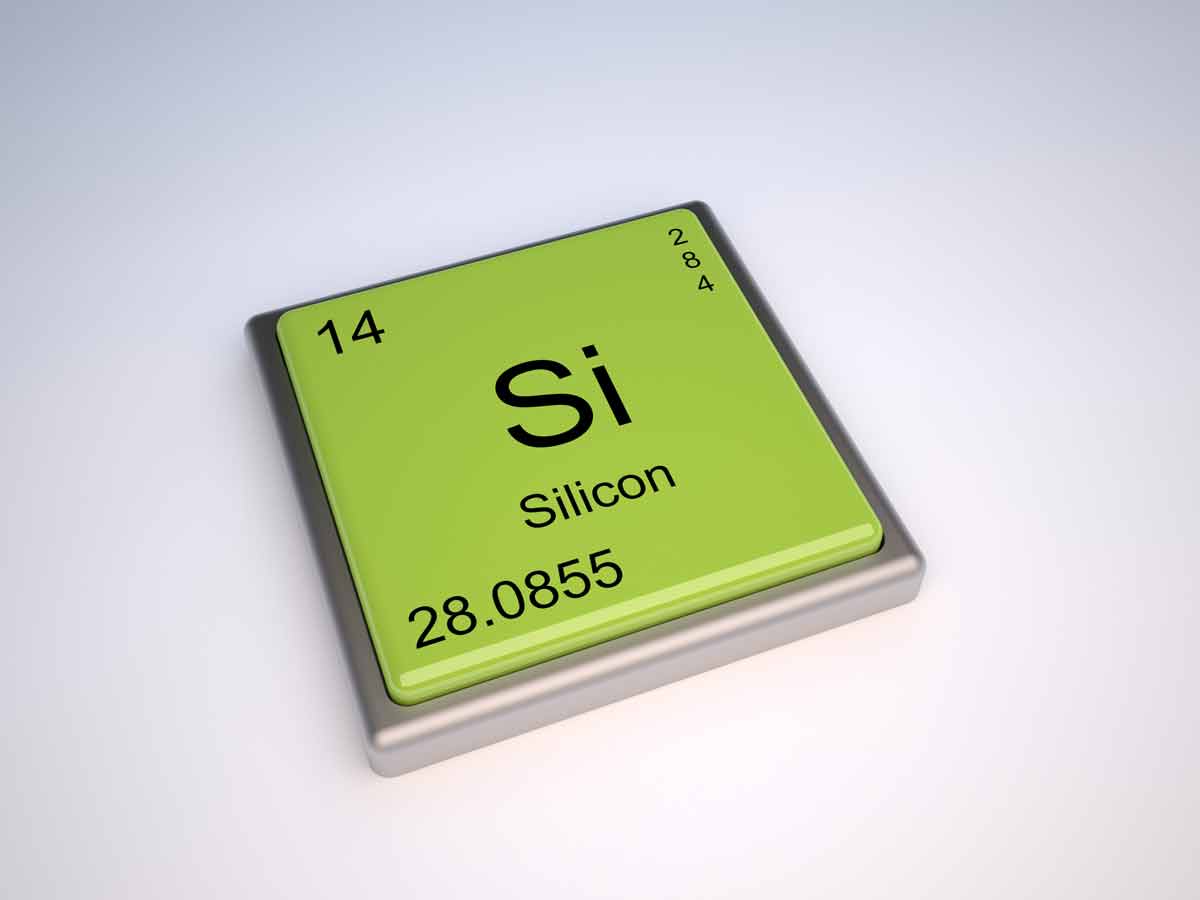As research expands, growers are realizing the benefits of adding silicic acid, a form of the element silicon, to their growing routines. Silicon is not considered an essential plant nutrient. Still, it provides many benefits to plants. Therefore, some people think of silicon as a biostimulant.
Silicon provides a number of benefits to plants. These include increased resistance to pests and pathogens, increased growth, and increased stress tolerance. The mechanisms behind these benefits vary. Some of these benefits are caused by improved plant responses to pests. Others are due to structural changes in plants. Yet other benefits are caused by changes in plant chemical signaling.
Before you apply silicon, it’s important to understand the forms that plants take up. After all, some forms of silicon are more available to plants than others. Therefore, applying silicic acid, silica, and silicate has different effects on plants. For best results, choose a product that contains monosilicic acid. One such product is Silution.

Bionova Silution Mono-Silicic Acid
Premium grade mono-silicic acid at its finest. Highly concentrated and ultra absorbent.
Bionova started producing nutrients back in the mid-90s, and they are still producing some of the world’s best.
Some Silicon Terminology
Before we dive into the details, let’s explore some terms. People often use these terms interchangeably, even when they don’t mean the same thing. So, don’t get led astray by other peoples’ mistakes. Also, if you’re unsure what a person or company is referring to, ask them to clarify.
I’ve noticed that a lot of product suppliers and growers use the term silica when that’s not what they mean. For example, growers say they’re applying silica products when they’re really applying silicon products. However, not all silicon products are silica.

So, here are the definitions of some common terms involved in talks about silicon in plants.
Silicon: a chemical element with the symbol Si and atomic number 14
Silica: another name for silicon dioxide (SiO₂); found in the mineral quartz and also a major component of sand
Silicic Acid: a general term for compounds containing silicon (Si), oxygen (O), and hydrogen (H)
Monosilicic Acid: Si(OH)₄ also known as orthosilicic acid
Silicates: compounds containing oxygen and silicon, including calcium silicate and potassium silicate
If you get confused about all the types of silicon compounds, refer back to these definitions. Most importantly, remember that these terms aren’t interchangeable! Silica is NOT the same thing as silicon.
What Does Silica Do for Plants?
So, what does “silica” do for plants? The truth is, not much. However, if you hear growers talking about applying silica, they probably mean they’re applying a product that contains silicon.
On the other hand, silicon does a lot for plants! This element is not considered an essential plant nutrient, since plants can complete their life cycles without it. However, silicon benefits plants in several ways. Some of the most important ways are mentioned below.
Silicon Promotes Plant Growth
This element increases the growth of cells, leading to faster growth of roots, stems, and shoots. Studies have shown that when growers apply silicon, plants grow taller and have thicker stems. This means stronger both larger and stronger plants. And larger and stronger plants means higher yields!
Silicon also encourages more lateral branching. So, if you’re looking for taller and bushier plants, add silicic acid. When you apply silicic acid products, you’ll be amazed at how much they impact plant growth.
Improves Resistance to Fungal and Bacterial Pathogens
Although it’s not fully known how, silicon helps protect plants against harmful fungi. Some of these fungi include fusarium wilt and powdery mildew. Scientists think one way this element protects plants is by stimulating plant defenses. When you add silicon to your plants, they can better recognize diseases and begin to fight back.

Another way silicon protects plants is by increasing the production of plant stress hormones. These hormones, including jasmonic acid and abscisic acid, help plants better respond to the stress caused by pathogens.
When you apply monosilicic acid to plants, you can often decrease pesticide applications by 50% or more.
Strengthens Cell Walls
When you apply silicon to plants, it becomes a part of plant cell walls. This leads to an increase in the strength and rigidity of cell walls. Think of silicon as a layer of mortar enforcing brick walls. The bricks can stand without the mortar, but they are much stronger with it.
With stronger cell walls, plants can better withstand pressure from wind and heavy rain. Since cell walls are less likely to experience damages, plants have a lower risk of breaking stems. Growing your plants indoors in a protected environment? Stronger cell walls still help plants by protecting against abiotic and biotic stressors.
Increases Resistance to Insect Pests
Just like silicon helps plants fight off fungal and bacterial pathogens, it also stimulates plant defenses that protect against insect pests. With these heightened defenses, plants are more likely to win the battles against their attackers.
Once in the plant, this element also stimulates the production of compounds that draw predatory insects and parasitoids in to attack the insect pests. Due to these stronger pest defenses, growers can decrease their pesticide applications.
Improves Tolerance to Drought and Heat Stress
When plants face adverse conditions such as drought, heat, or cold, silicon promotes the production of defense compounds. Along with this, silicon increases nutrient uptake. Therefore, this leads to plants that can better withstand abiotic stressors. Just as with humans, increased health in plants allows them to better respond to trying conditions.
Protects Against Heavy Metals
We know that heavy metals such as cadmium, arsenic, and lead can harm plant health. These metals can damage plant cells, stunt plant growth, and prevent proper nutrient uptake. However, silicon can help protect plants against the damages caused by heavy metals.
One study showed that plants supplemented with silicon can better protect themselves against the heavy metal cadmium (Cd). Also, silicon helps protects plants against the harms caused by heavy metal aluminum (Al). Therefore, if you’re growing in contaminated soils, it’s especially helpful to provide your plants with high enough levels of silicon.
Plant Available Silica
Even though silicon is not known as a major nutrient in plant nutrition, it’s quite common in the world. In fact, the earth’s crust contains more than 27% silicon. That makes it the second most abundant element in the earth’s crust, following oxygen.
So, if there is so much silicon already present why must you apply it to plants? Because most of the silicon in the plant’s crust is held in forms plants cannot take up. These include silicon dioxide (silica) and various silicate minerals. Silica is found in nature as quartz, a component of sand, and as a part of other rocks.
While plants can’t take up silica, they can take up another form of silicon —monosilicic/orthosilicic acid. Bacteria can convert other silicon compounds into monosilicic acid. However, this process takes weeks or months. By the time silicon is in a plant available form, it is often too late. Therefore, growers often apply silicon in the form of monosilicic acid.
Silicon and pH
It’s important to note that the pH of a solution impacts the form of silicon in solution. When a solution is moderately basic (a pH above 8), monosilicic acid will react with minerals. Once this happens, the silicon precipitates out as a solid.
Therefore, it’s probably best to add silicon nutrients to an acidic hydroponic nutrient solution, with a pH roughly between 5.5 and 6.0. Most nutrient solutions are generally in this range. However, if you’re running at a higher pH, say around 8.0, the silicon might react with the other nutrients dissolved in your solution and precipitate out.
In other words, don’t add silicon to alkaline nutrient solutions with a high pH. If you do, it could wreck your nutrient solution altogether!
Here’s a little pro tip for you: In order to avoid precipitation, many experienced master growers dissolve and dilute their nutrients into small batches of water, just before adding them to the main nutrient solution.
What to Look for in Silicon Products
It’s important to take note of not only the percent of silicon in a product but also the percent of plant-available silicon (PAS). Just because a product contains a high percentage of silicon, it does not mean plants will take up a high percentage. Also, just because a product contains stabilized silicic acid, it does not necessarily mean it contains a high amount of plant-available silicon.
When searching for products, look for the form of silicon that a product contains. Next, look for the total silicon content and plant-available silicon content.
Silicic Acid for Plants
As mentioned above, monosilicic/orthosilicic acid is the type of silicon available to plants. This compound is just one molecule of silicic acid, rather than a chain of molecules attached together.
Bio Nova SiLution consists of a stabilized and bioavailable form of silicic acid. This product also contains fulvic acid. This biostimulant helps stabilize the silicic acid. It also increases a plant’s defense against stressors.
SiLution also contains boron and zinc. These three elements (Si, B, and Zn) work together to provide maximum benefits to plants.
Applying Silicic Acid
There are two main ways to apply silicic acid: as a foliar spray or as a soil application.
To apply as a foliar spray, mix your product in solution according to product instructions. Research trials suggest that stabilized silicic acid sprays should contain 2-6 mL/L (7-45 ppm) of silicic acid.
For best results, begin spraying your plants in the early vegetative stage of growth. Spray 3-4 times over a period of 2-3 weeks.
Research on foliar sprays has shown the following results:
- Enhanced root growth
- Increased nutrient content
- Higher sugar content (Brix)
- Decreased bacterial and fungal infections
- Increased protein content
Growers can also apply silicic acid to their growing media through a fertigation system. This method also helps stimulate soil bacteria. Therefore, it increases nutrient availability.
Hydroponic growers can apply silicon to their solution. As with foliar feeding, it’s best to start applying to plants during the early stages of growth. Apply every 5-10 days.
Silica During Flowering
As noted above, you should start applying monosilicic acid during the early vegetative phase. You can continue to apply it for the next few weeks. When your plant begins to flower, reduce the amount you are applying.
While some growers state you should stop silicon applications all together once flowering starts, plants can benefit from silicon through every stage of their lives. However, they do require less during flowering. So, you can decrease the amount you’re applying.
When to Stop Using Silica
So, when should you stop using silicon products? There’s no clear answer. Some growers swear by stopping silicon applications once a plant begins flowering. Other growers continue to apply silicon throughout the plant’s whole life. Try experimenting and see what works best for you.
No matter when you stop applying silicon products, make sure you start applying them during early vegetative growth.
Mono-Silicic Acid vs. Potassium Silicate
Potassium silicate (K2SiO3) is a salt of silicic acid (H4SiO4).
As mentioned above, silicates are not available to plants. So, plants cannot take up or use potassium silicate. First, bacteria must convert it to monosilicic acid.
Therefore, applying potassium silicate does not have the same effects as applying monosilicic acid. Plants will not be able to experience the benefits of silicon until weeks or months after you apply potassium silicate.
Wrapping Up
As you’ve read above, silicic acid is a helpful addition to plants. One way it benefits plants is by helping them fight against drought, heat, diseases, and pests. This can help decrease applications of pesticides. Another way silicon helps plants is by increasing plant growth and yield, putting more money in your pocket.
Remember that silicic acid is a silicon-containing compound, but not all silicon-containing compounds are silicic acids. Therefore, applying silica or silicates is not the same as applying monosilicic acid.
If you choose to apply monosilicic acid (which you should), you can apply as a foliar spray or as an addition to your growing media or solution. You should begin applications during the plant’s early stages of vegetative growth. And make sure you decrease applications once plants begin to flower.
If you’re looking to add silicon to your amendment routine, check out the SiLution Silicic Acid product from Bio Nova. Not only does this product contain monosilicic acid, but it also provides plants with humic acid, boron, and zinc. Consequently, this combination of nutrients and biostimulants will boost your plants’ growth and health.
References
The Effects of Foliar Sprays with Different Silicon Compounds
Role of Silicon on Plant-Pathogen Interactions
Silicon and Mechanisms of Plant Resistance to Insect Pests
Silicon and Plants: Current Knowledge and Technological Perspectives
